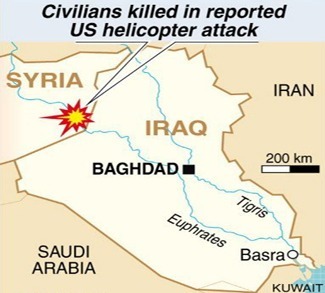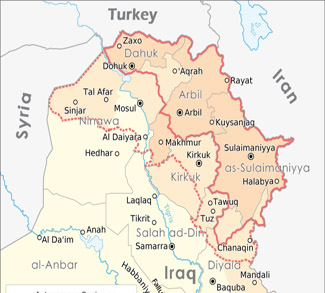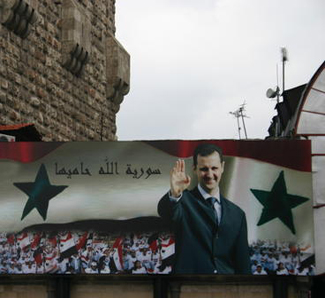The ousting of the Assad regime in Syria in December 2024, which happened as a result of a major offensive by the opposition forces, could at a first glance be regarded as representing a rather unexpected development, especially if one considers the speed with which the military-strategic and political circumstances changed on the ground. However, while the rapid loss of morale among many of the former president’s loyalists and the token resistance put up by them could have hardly been anticipated, there were certainly a multitude of signs since at least the early 2020s that the ruling Ba’ath Party was in a precarious position.
On the one hand, one cannot disregard the preoccupation of important allies or ‘Black Knights’ (international sponsors offering various forms of assistance to autocratic leaders) of the Assad regime with other military conflicts. Hezbollah, the Lebanese paramilitary group and Iranian proxy force, which had in the 2010s played a decisive role in propping up the Ba’athists during critical junctures of the Syrian civil war, was in a significantly weakened position due to its war with Israel, while the Russian Federation has since early 2022 almost exclusively concentrated on its full-scale invasion of Ukraine. From a theoretical standpoint, these military engagements of Hezbollah and Russia have represented disruptions with regard to the notion of regional autocratic linkage, which has been recognized as one of the potential pillars of stability when it comes to authoritarian political systems.
On the other hand, if we are to shift the focus to the situation within Syria, a number of critical risk factors for autocratic breakdown manifested themselves in the years preceding the Syrian opposition’s ‘Deterrence of Aggression’ military operation.
How does the fall of the Assad regime measure up to theory?
Many scholars suggest that the robustness of the security forces is a pivotal factor in determining whether or not an autocratic ruler is likely to survive episodes of large-scale unrest. In particular, comparativist Eva Bellin argued in 2004 that the unique resilience of authoritarianism in the Middle East was in large part connected to the “robustness of the coercive apparatus.” The security forces’ strength can be evaluated by drawing on a number of measures, amongst which are the fiscal health of a regime, its ability to apply repression without seriously compromising international support, and the extent of the anti-government popular mobilization. It could plausibly be argued that in the case of Syria all of these ingredients have been part of the picture since the early 2020s.
Firstly, even though there was a lull in the Syrian civil war following the March 2020 Idlib ceasefire, with Bashar al-Assad managing to maintain an uneasy peace in the areas under his control (about two thirds of the country’s territory), in the same timeframe the effects of US sanctions were becoming more strongly felt, perhaps to a degree also exacerbated by the lingering impacts of the COVID-19 pandemic, with some agencies estimating that at least 80% of Syrians were in need of humanitarian assistance. Furthermore, the worsening economic situation in Lebanon since 2019, as evidenced by the liquidity crisis in the country, which saw a plummeting of the GDP per capita, served to deprive the Syrian authorities of an important “economic lung.” Many of the Syrian Army soldiers were not exactly insulated from the effects of these negative trends, with the poverty-related issues also causing food insecurity for the members of the armed forces.
Thus, the intertwined factors of an unsatisfactory economic performance of the regime and a disillusioned security apparatus were certainly a feature of the Syrian political landscape in the years preceding the rebels’ successful offensive.
As mentioned above, large-scale popular mobilization or at least passive support on the part of the general populace when it comes to the actions of anti-government forces also reduce the survival prospects of authoritarian regimes. There is some evidence that average citizens may behave strategically, relegating ideological concerns to the backstage, and show a willingness to cooperate with an extreme rebel movement if they feel that such a group is better-positioned to win a war and resist corrupting influences once it assumes power. In light of Syria’s negative economic indicators, it is worth considering that a pessimism-inducing economic situation may likely go hand-in-hand with grievances pertaining to real or perceived corruption.
The willingness of religious moderates to band together with compatriots subscribing to a significantly more fundamentalist interpretation of the scriptures is not necessarily too novel of a development. Since the late 1990s, there have been instances in Middle Eastern countries such as Jordan, Iraq, and Yemen of leftists and liberals engaging in a constructive fashion with Islamists in order to pursue issues of common interest.
In this regard, the power of political rebranding should not be underestimated. Even though Abu Mohammad al-Julani, the politically savvy leader of Hay’at Tahrir al-Sham (HTS), the Sunni Islamist political organization that is considered to be the vanguard of the anti-Assad opposition, has had a very checkered past and has been a far cry from a political moderate, he has certainly invested efforts towards throwing off the mantle of a jihadist and reinventing himself as a rebel statesman.
In the summer of 2016 al-Julani severed ties with al-Qaeda, initially changing the Al-Nusra Front’s name to Jabhat Fatah al-Sham, and subsequently (in 2017) to the current HTS. Al-Julani explained that the main intention behind this move was to deprive external powers such as the United States or Russia of the justification to launch attacks, with Qatar likely playing a role in encouraging his hand. Even though there are ample grounds to doubt the extent to which the shift in ideological orientation could be considered to be genuine, HTS’ outreach to Syria’s diverse communities has been assessed as at least somewhat successful due to it being able to make inroads into some traditionally pro-Assad groups. For example, Ismaili Shias were supportive of or at least not too keen to oppose the rebel forces and there were even celebrations and chants for unity in Alawite strongholds such as Latakia. In the years prior to the offensive, the HTS militia had also displayed some tolerance towards religious minorities, such as Christians and members of the Druze community, in the areas under its control.
A further point that the rebels have in their favor is that even though there are many competing factions and fissures within the HTS coalition, ranging from radical Salafists to Syrian nationalists associated with the Free Syrian Army, the rhetorical wiggle room for distancing from the more ideologically extreme fighters has not been in short supply. This is because the soldiers who consider Syria to be just one of many battlefields in a struggle to secure a global victory for Islamism and have steadfastly opposed the HTS’ rebranding effort are more likely to be of foreign origin. The HTS, which has previously been characterized as a relatively localized terrorist organization, has continued to emphasize the distinction between Syrian- and foreign-born fighters in its handling of incidents such as the burning of a Christmas tree on 24 December in Al-Suqaylabiyah, a town with a Christian majority.
The HTS’ rebranding, whether reflective of true political maturation or pure pragmatism, has been important because it has arguably served to challenge the negative legitimacy cultivated by Assad, which has for a long time been regarded as the main saving grace of his government, mainly due to the perception that all of the alternatives to the Ba’ath Party’s rule were by definition significantly worse for the secularists and the religious minority groups in Syria.
In recent decades there has also been a deepening of transnational bonds between national societies, contributing in certain instances to the “diffusion of contention across borders.” While it is perhaps still too early to evaluate the salience of this phenomenon as it pertains to Syria, given that 2024 year has been notable for the relevance of the anti-incumbency factor in countries as different as the United States, France, South Africa, and Sri Lanka, the almost worldwide negative sentiment against political office holders may have played a small part in further emboldening the Syrian opposition or at least discouraging formerly pro-Assad Syrians from throwing their weight behind his government.
What most Syrians are likely to cautiously hope for is that the inclusion-moderation hypothesis will prove its merits in the Syrian context, as a result of which the behaviorally and ideologically radical groups will not be in a position to dictate to or overly influence the agendas of the more moderate political forces, which could pave the way for a proper democratic transition.




